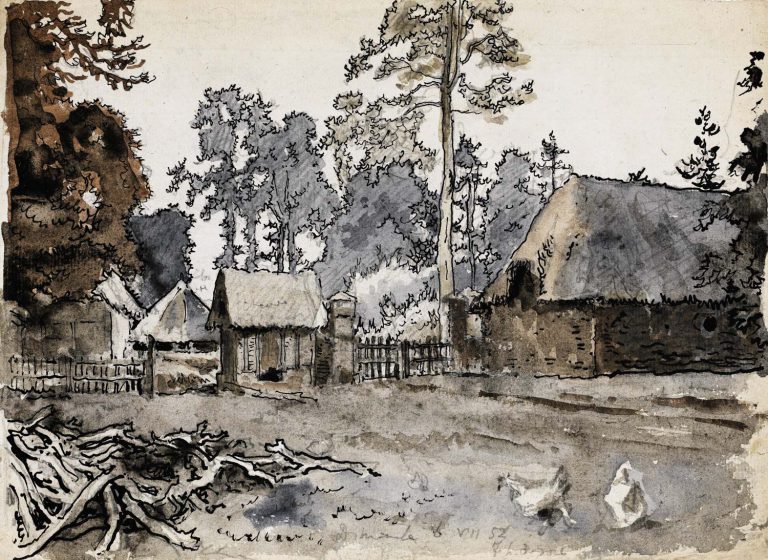Biography
Alexandre Benois was a famous painter, graphic designer, a prominent figure in theatre and cinema and a founder and ideologist of the Mir Iskussktva (World of Art) movement and magazine. He was born in St. Petersburg on 21 April 1870.
During his gymnasium and university years he befriended Dmitry Filosofov, Walter Nouvel and Konstantin Somov and later Sergei Diaghilev and Léon Bakst. In the late 1890s this circle shaped into the Mir Iskusstva movement and the editorial of the magazine with the same name. It was Mir Iskusstva where Léon Bakst, Mstislav Dobuzhinsky and Eugène Lanceray began their diverse activities.
Benois started as a landscape painter and painted landscapes, primarily in watercolour, during all his life. They account for almost a half of all his works.
He produced many easel paintings and graphic works, but his talent and artistic thinking were not those of a master who could synthesise all facets of an idea in a single image. It is no strange that his best works were in the area of book and stage design. Benois’ way of thinking and approach were those of an illustrator or a set designer and director, who could reveal the diverse aspects of his idea in a series of sketches and compositions, alternating architectural and landscape sets and elaborate mise-en-scenes. A notable figure in many genres – literature, painting, history of arts, criticism and direction – Alexandre Benois played an enormous role as a stage designer and theatre theorist.
Benois worked in watercolour, gouache, pastel, oil, tempera, ink and crayon. He often used a mix of techniques to achieve a harmonious blend of painted and graphic elements in a picture. The main features of his works are sketchiness, the visibility of his technique, the emphasised stroke, the “sharp” fragmentary composition and the high or low viewpoints which make his works extremely expressive and poetical.
Alexandre Benois died in Paris on 9 February 1960.
Most of his works are in the Russian Museum in St. Petersburg and the Tretyakov Gallery in Moscow.
He was awarded the Legion of Honour (knight in 1906 and officer in 1916), the officers’ cross of the Crown of Italy (1911) and the Order of St. Vladimir.




